February 28, 2022 - VGL Vocab: Transposable Elements
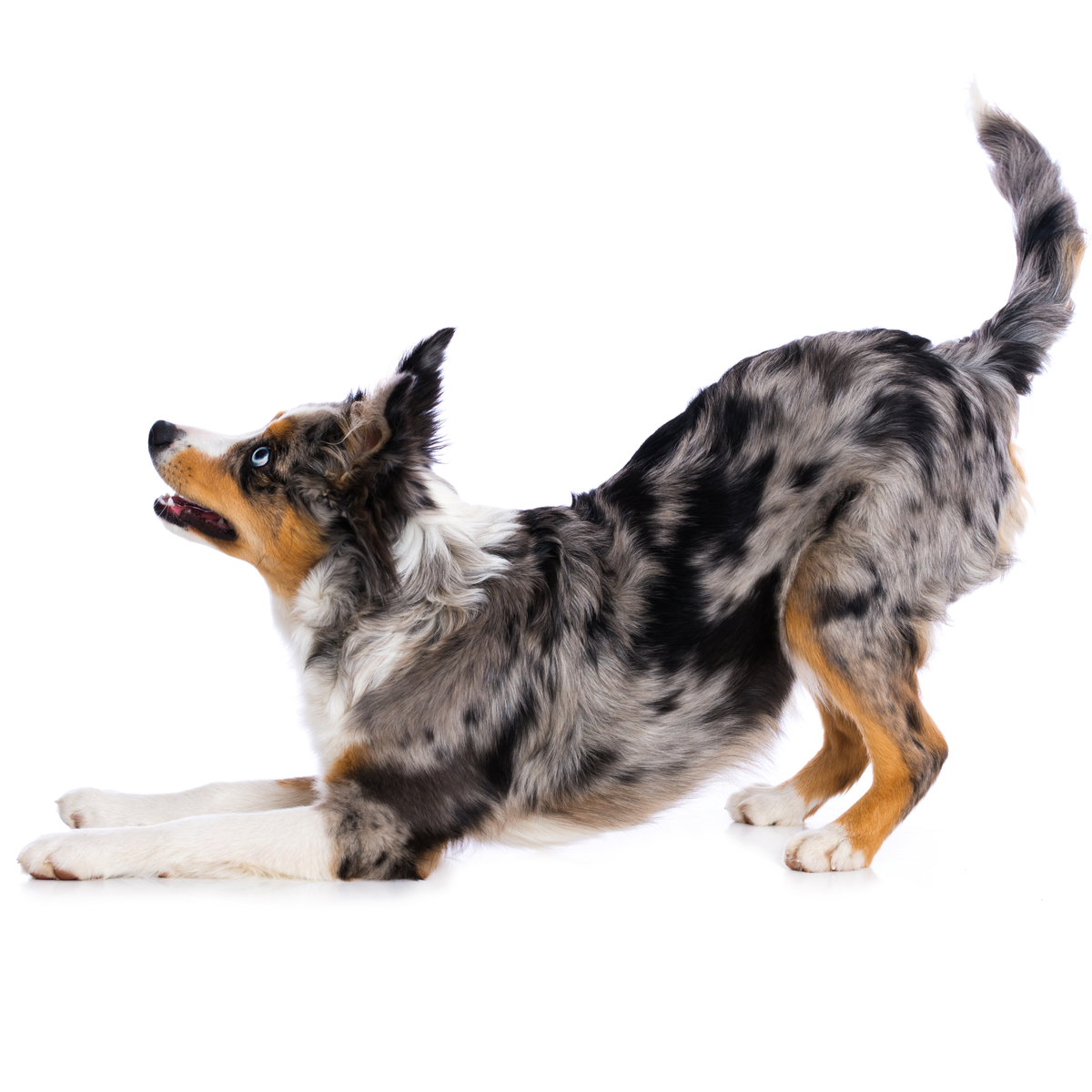
Have you heard of "jumping genes"?
Discovered by Noble prize winner Barbara McClintok while studying corn in the 1940's, transposable elements (TEs) are sequences of DNA that are able to move (or "jump") from one location of the genome to another, often making copies of themselves as they move.
About half of the human genome and 31% of the dog genome are thought to be composed of TEs. However, most of them have lost their ability to move around.
When one of these mobile elements "jumps" to a different location, they can insert themselves into a gene and change how that gene functions. When this "jumping around" happens in the reproductive cells, it can be passed on to the individual's offspring.
The Merle coloration seen in dogs, for example, is caused by a type of transposable element that inserted itself into the PMEL gene - a gene that regulates the biosynthesis of eumelanin (black/brown pigment).
The presence of one copy of this Merle variant can result in a Merle coloration, although the length of the variant sequence is also known to vary and influence the manifestation of this phenotype.
To learn more about the genetics behind Merle coloration, visit https://vgl.ucdavis.edu/test/merle
December 13, 2021 - VGL Vocab: Carrier
An individual that has a mutation (or genetic variant) and is capable of transmitting it to its offspring is considered a "carrier". The term is often used in association with recessive disease traits, but can also be applied to non-disease traits. In these cases, the "carrier" appears normal, displaying no signs of having the mutation, but they may still pass on that mutation to their offspring.
In recessive diseases, an individual will only be affected by the disease if it has two disease variants (or alleles). For example, Progressive Retinal Atrophy in Persian cats (PRA-pd) is a recessive disorder. Cats with two copies of the mutation will develop the condition and go blind. Cats with one disease allele and one normal allele are called carriers because they carry the disease allele, but their vision appears normal. Since they carry the disease allele, they can transmit that allele to their kittens. When a carrier is bred to another carrier of PRA-pd, there is a 25% chance (or 1 in 4) that a kitten will have the disorder and go blind.
Check out our website for more information about genetic testing for PRA-pd: https://vgl.ucdavis.edu/test/pra-pd
October 26, 2021 - VGL Vocab: Genome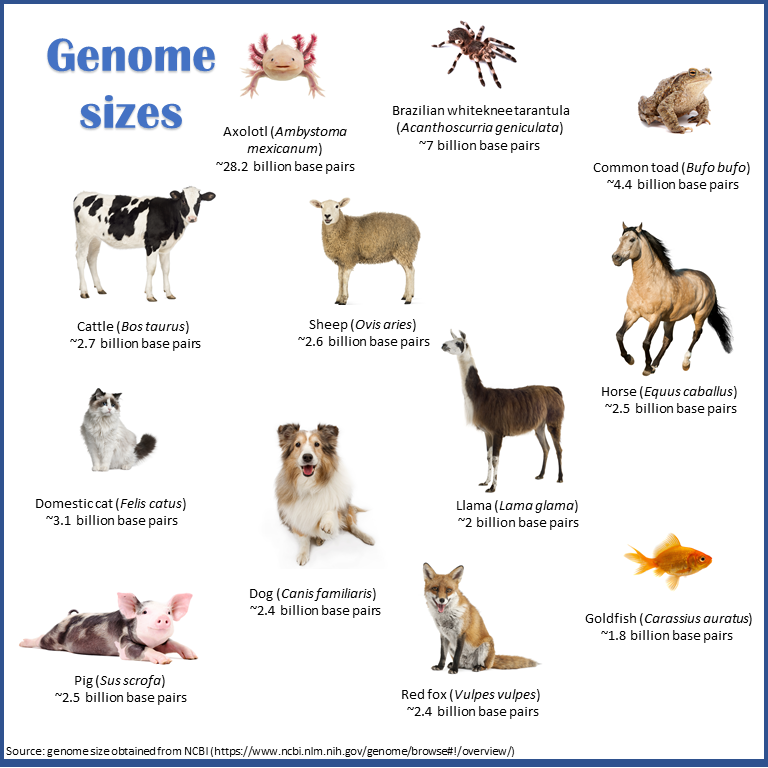
Coined in 1920, the term "genome" is commonly used to refer to an organism's complete set of genetic material, containing all the information needed for an organism to function.
An organism's genome is made up of long molecules of DNA and one way to determine the size of a genome is to count the number of base pairs it contains (i.e. the number of DNA building blocks). Genome size varies significantly between organisms, although larger genome size is not necessarily associated with an organism's complexity.
For example, the genome of a marbled lungfish has ~130 billion base pairs, whereas the human genome has about 3.2 billion! Check out the size of other animals' genome in the figure below.
April 26, 2021 - VGL Vocab: Epigenetics
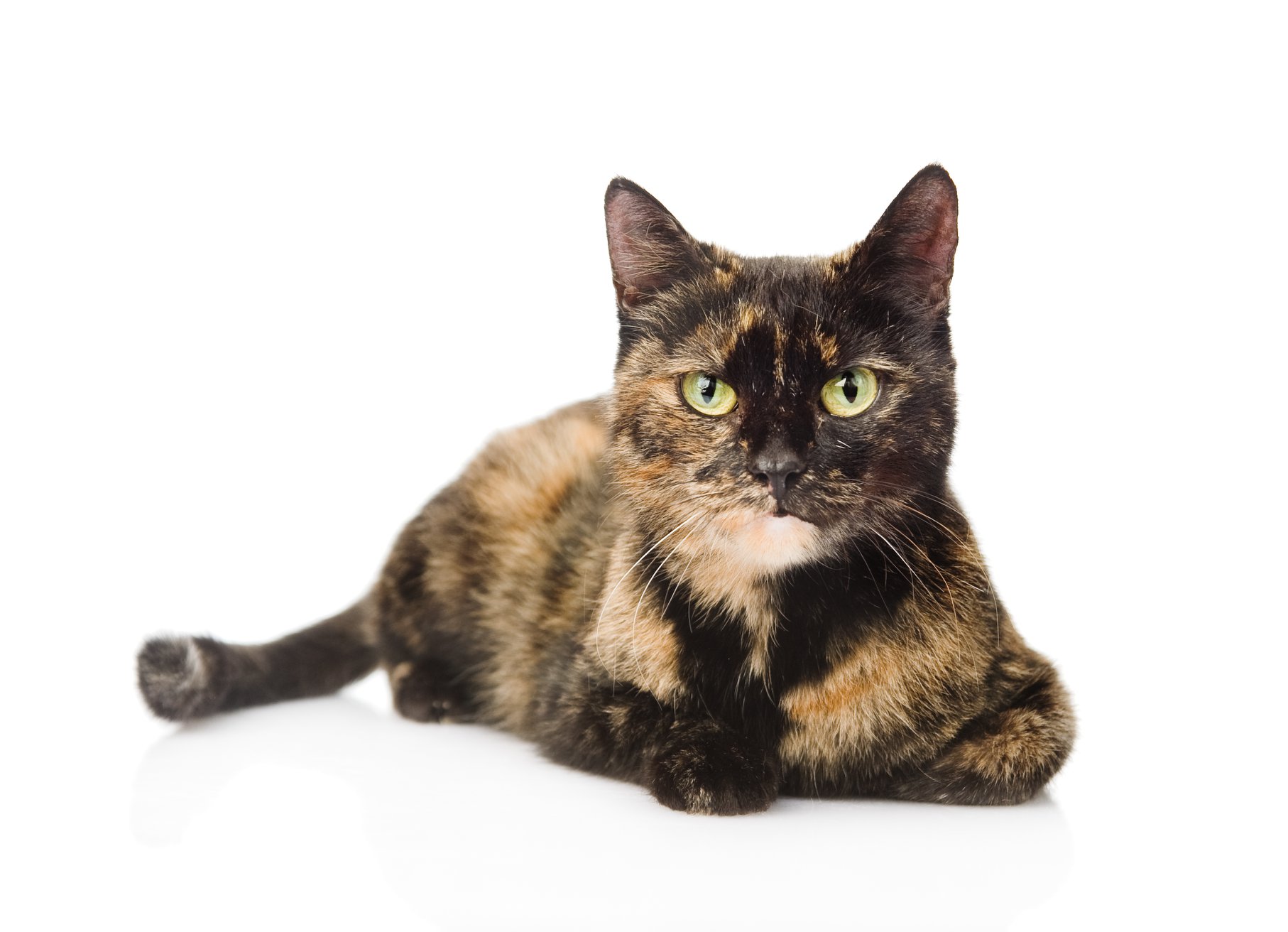
Epigenetics describes a phenomenon where outside factors (chemicals, diet, stress, etc.) can alter gene expression and thus phenotype without altering the underlying DNA sequence. The Greek prefix “epi” means “upon” so essentially the term epigenetics means 'in addition to' the genetic sequence.
Epigenetic changes have been shown to be responsible for aging and some diseases, and are thought to be important to phenotypic variation for complex traits across animal species.
One example often used to explain epigenetics is the calico pattern seen in cats. Calico cats are most often female and have patches of orange and bands of black fur. This coat color is the result of an epigenetic event known as X-inactivation. These cats have the genetic code for orange fur color on one of their X chromosomes and the code for black fur on the other. In each cell, one of the two X chromosomes are randomly turned off early during development through a combination of changes that take place to one of the two X chromosomes. Patches of fur that are orange will have the chromosome with the genetic recipe for black fur silenced and vice versa.
Since the process of X inactivation is randomly brought on by epigenetic events early in development, this can result in two cats with an entirely different calico pattern even if the individuals are genetically identical!
September 14, 2020 - VGL Vocab: Punnett Square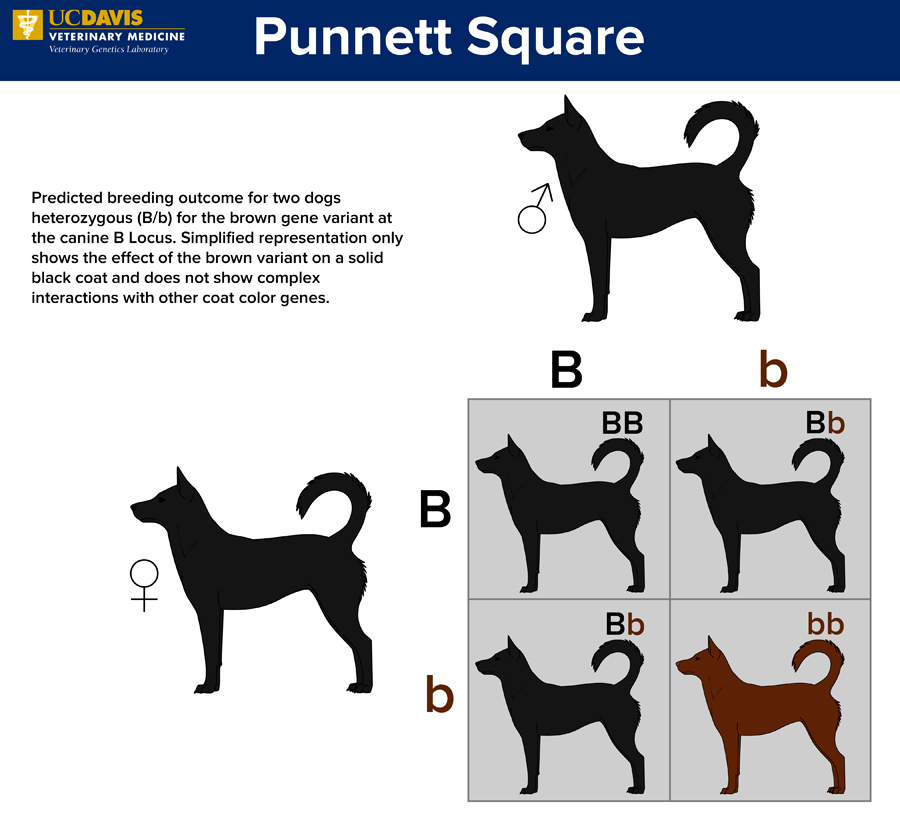
A Punnett Square is a useful tool to assist in predicting outcomes for planned breedings. It can be easily utilized to investigate possible outcomes for traits that are explained by single genes or by a few genes.
This tool was invented by the early 20th century English geneticist Reginald Punnett in order to calculate the probability of inheriting a specific trait. To create a Punnett Square, you begin by drawing a grid. Next you put the possible allele combination for a given locus of one parent across the top and that of the other parent down the left side. The boxes of the Punnett Square are filled by combining the different possibilities for each parent. The end result is the probability of each possible genotype!
June 10, 2020 - VGL Vocab: Zoonosis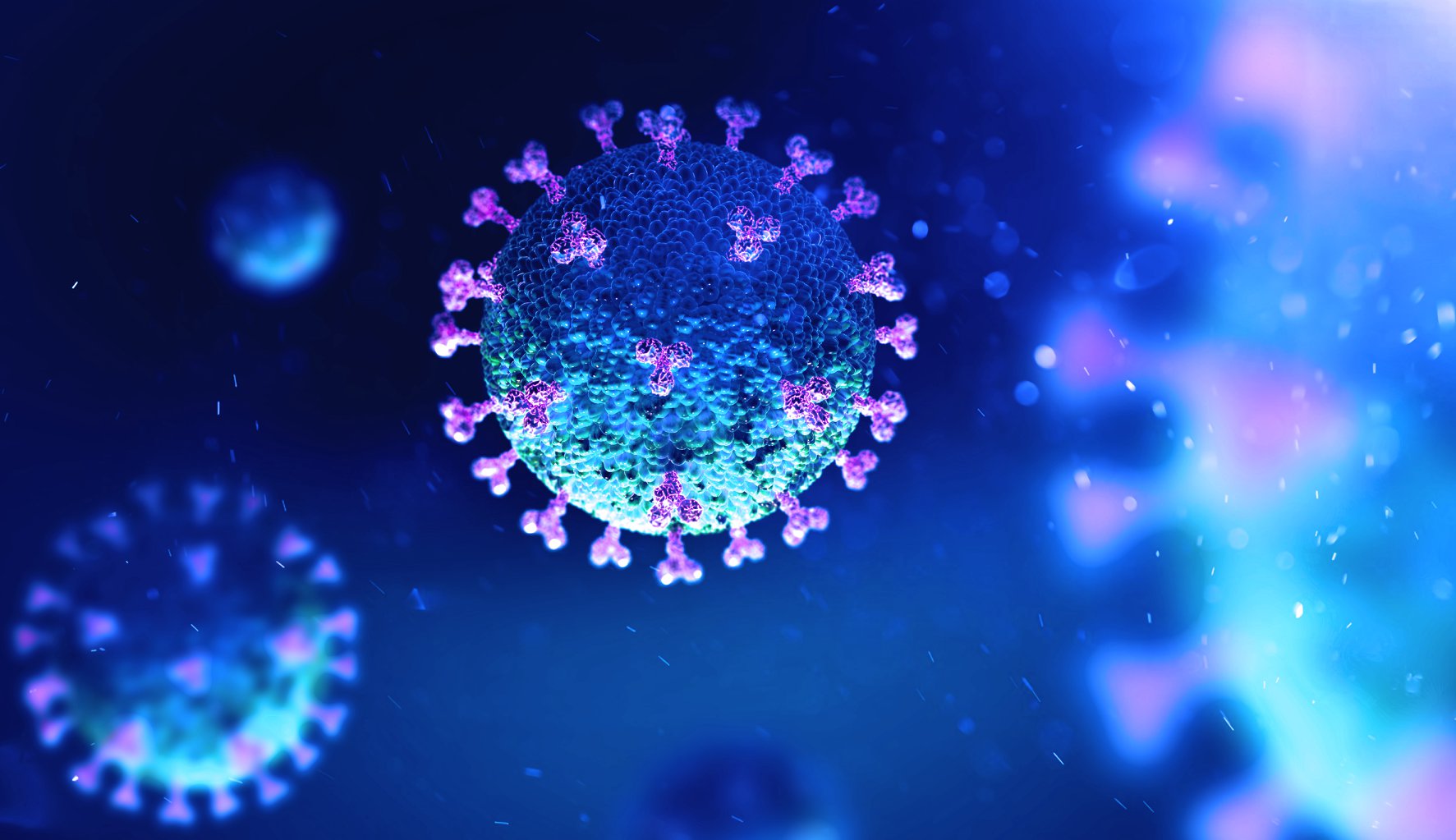
Zoonosis describes when a disease that is found in animals "jumps" to also infect humans. The diseases are caused by pathogens such as bacteria or viruses and they may or may not cause adverse effects in the original host species. COVID-19 is an example of a zoonotic disease as are Anthrax, Rabies and Lyme Disease. Scientists can identify when a disease is zoonotic by sequencing the DNA/RNA of the pathogens from the two species and comparing them.
September 30, 2019 - VGL Vocab: Prions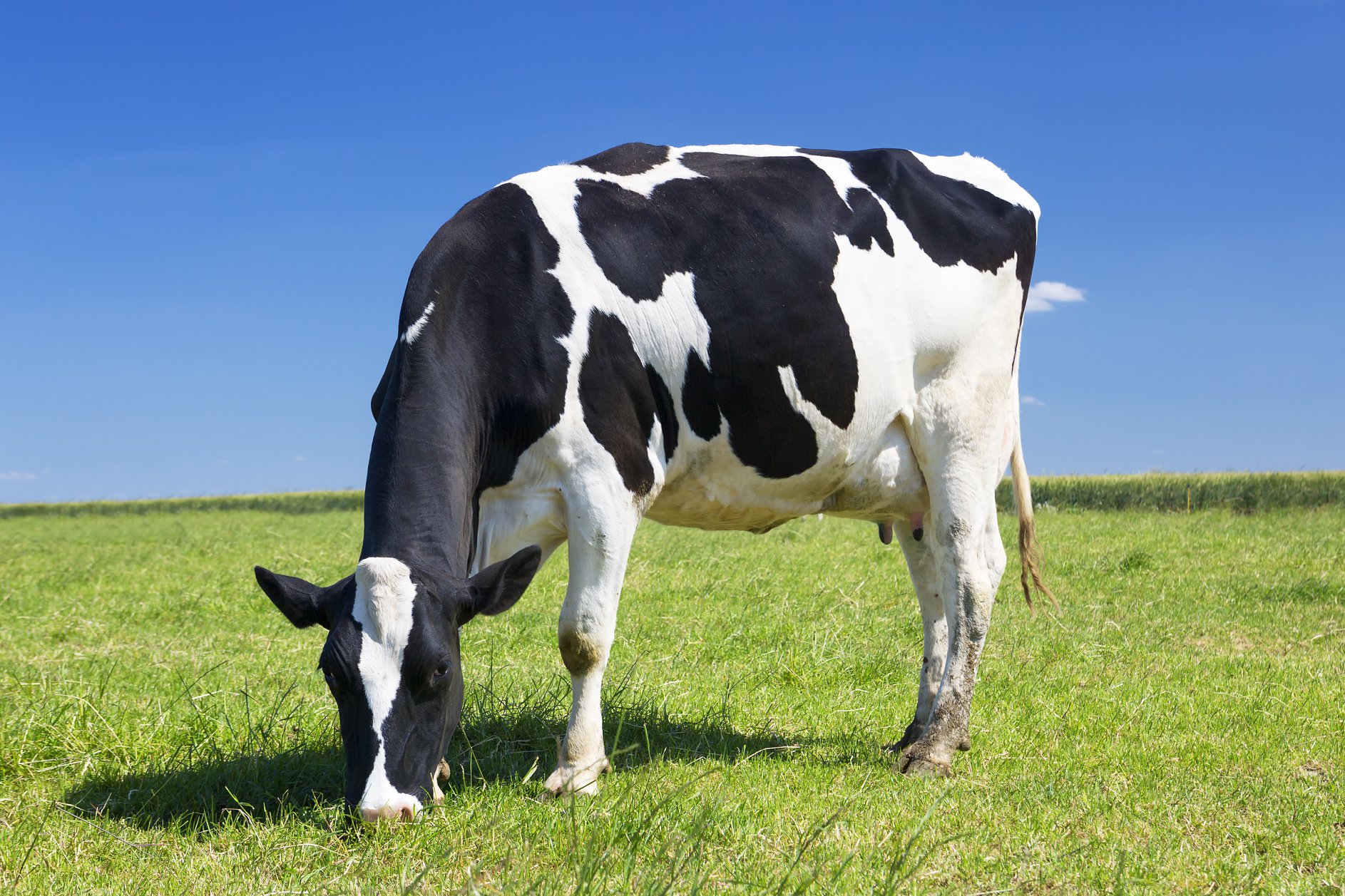
Prions are an infectious form of proteins caused by the misfolding of the protein structure. The abnormal folding of the prion proteins occurs in the brain and thus leads to brain damage and other neurological symptoms. Prions are believed to be the smallest infectious particles and they contain no genetic material.
A group of diseases caused by prions are transmissible spongiform encephalopathies (TSE). A well-known TSE is bovine spongiform encephalopathy (BSE) which is also known as "Mad Cow Disease".
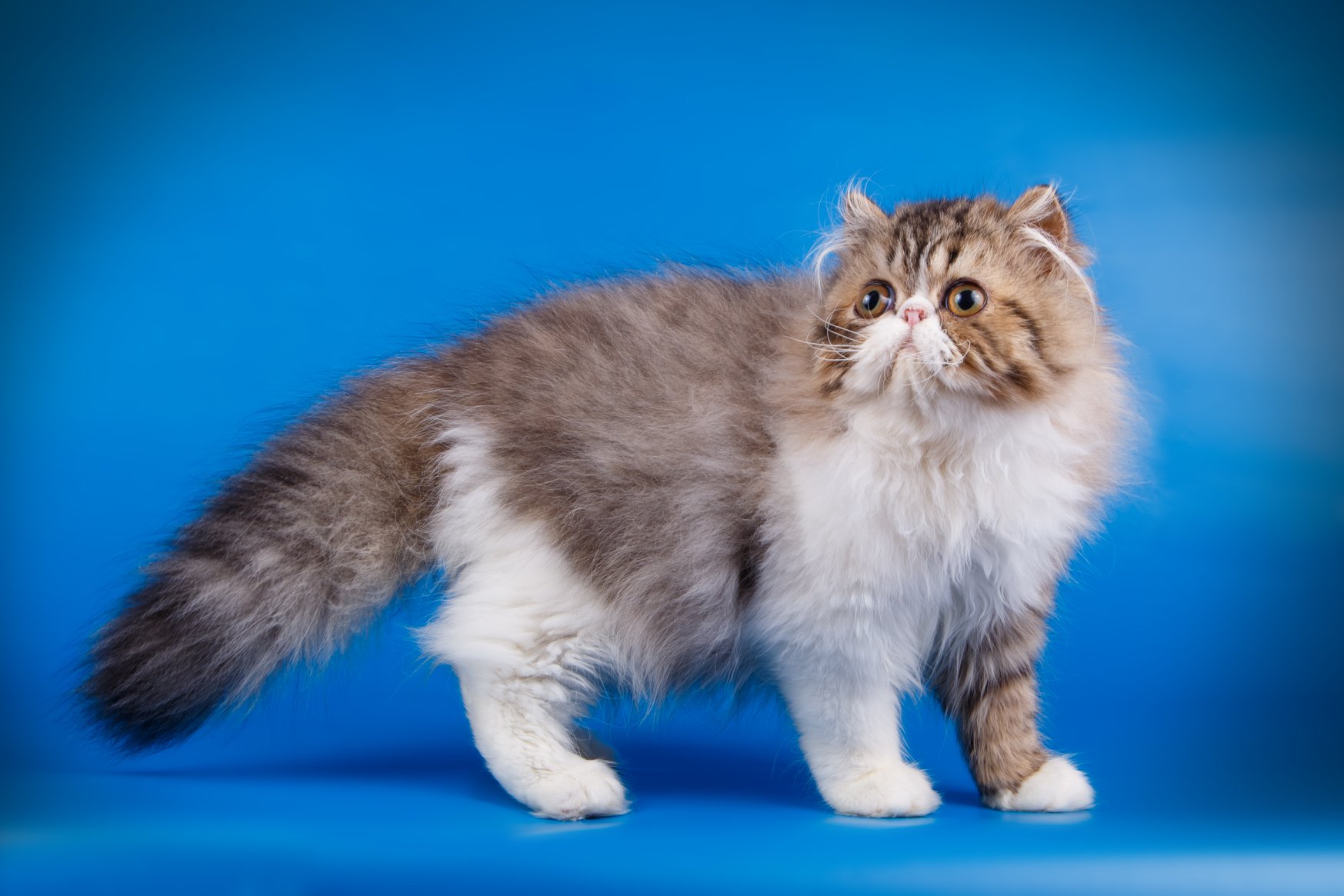
August 20, 2019 - VGL Vocab: Brachycephaly
#VGLVocab Brachycephaly means "short skull" and refers to the short nose and flat face seen in some dog and cat breeds. This flattening of the face is a desirable trait in many breeds, mainly due to it's baby-like features, with large forward facing eyes. There are varying degrees of brachycephaly in cats and dogs, from a slightly shortened muzzle, to a very flat face.
Examples of popular brachycephalic dog breeds include the French Bulldog, Pug, English Bulldog, Boston Terrier, Boxer, Shih Tzu, Pekingese, and Cavalier King Charles Spaniel. Popular brachycephalic cat breeds include the Persian, Himalayan, Exotic Shorthair and Burmese.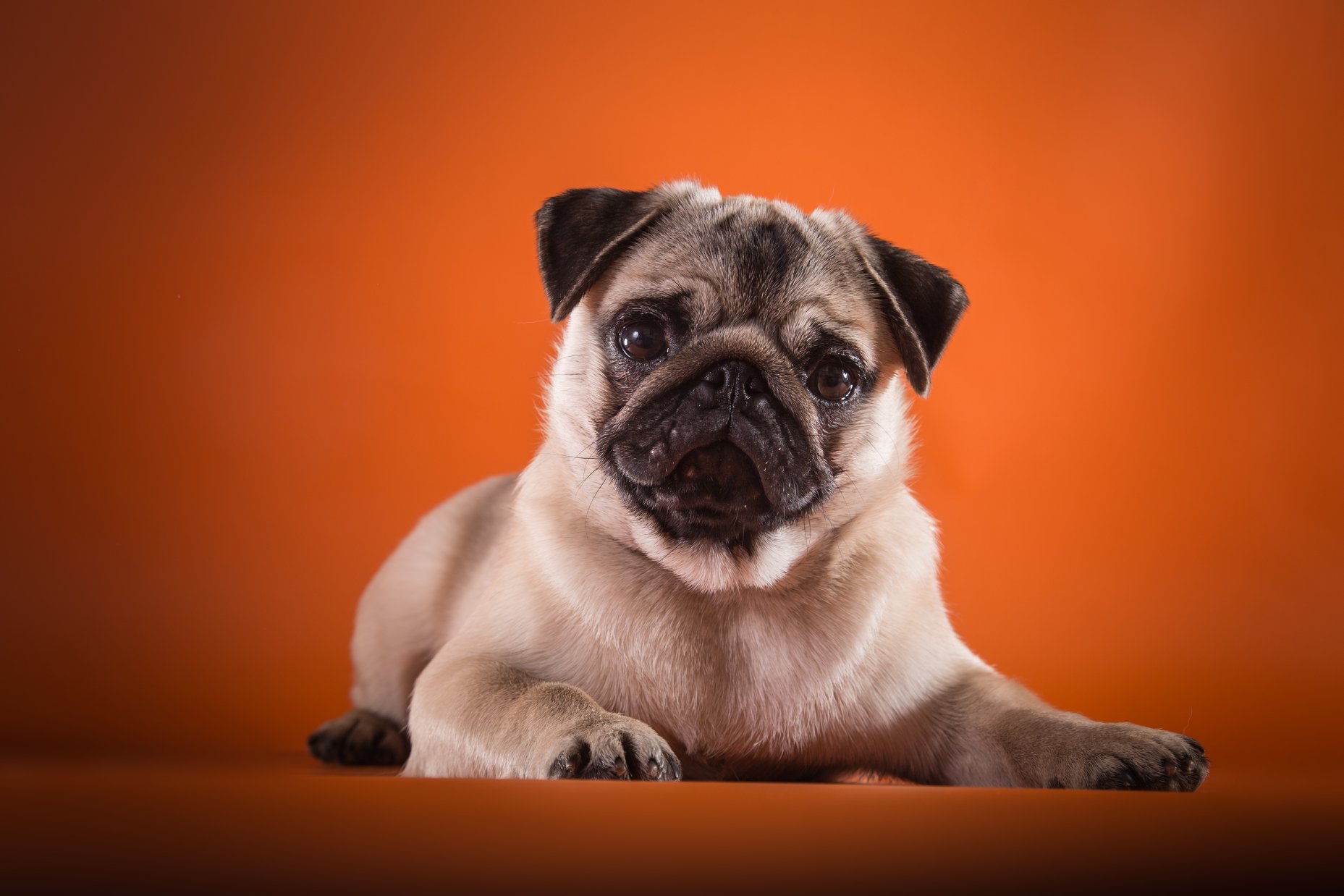
Due to their unique head shape, Brachycephalic animals may snore and/or snort and may be more sensitive to heat and exercise (https://doi.org/10.1016/j.tvjl.2016.11.019).
Keep following for more #VGLVocab in the future!
June 14, 2019 - VGL Vocab: Codominance and Incomplete Dominance
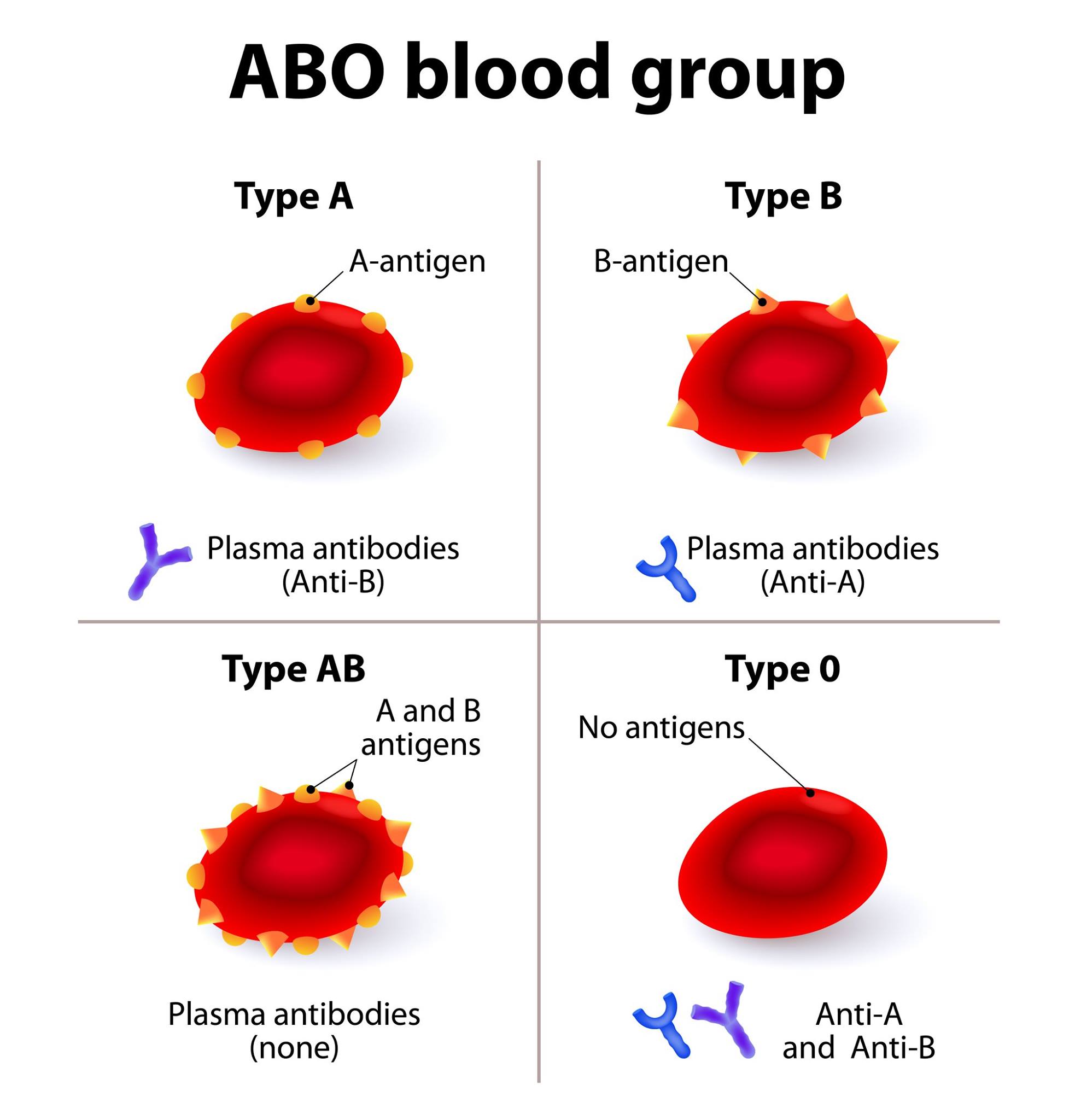
This diagram represents the four human blood types in the ABO blood group system.
#VGLVocab In previous VGL Vocab posts we discussed alleles and dominant and recessive phenotypes. With dominant mutations, only one copy of the gene needs to be present for an animal to express a trait or disease, while recessive traits require two copies.
Another mode of inheritance is codominance, a situation when two different alleles are both expressed. One example of codominance occurs in human blood types. In the ABO blood group system, humans have 4 basic blood types based on the antigens present on the surface of red blood cells: A, B, AB and O. Blood types A and B are both dominant to type O, but types A and B are codominant to each other. When an individual has type AB blood, both antigens are expressed on the red blood cells. Since June 14 is World Blood Donor Day we wanted our followers to be in the know about the codominance of blood types! (https://www.who.int/campaigns/world-blood-donor-day/2019)
Incomplete dominance is is another mode of inheritance where the phenotype is different for animals carrying zero, one, or two copies of the allele for the trait/disease. One example of incomplete dominance is the horse coat color Cream. A horse with a red base color and one copy of the cream allele has an intermediate phenotype of Palomino, while two copies of the cream allele creates a Cremello color.
For more information about our horse coat color testing, see:
https://www.vgl.ucdavis.edu/services/coatcolorhorse.php
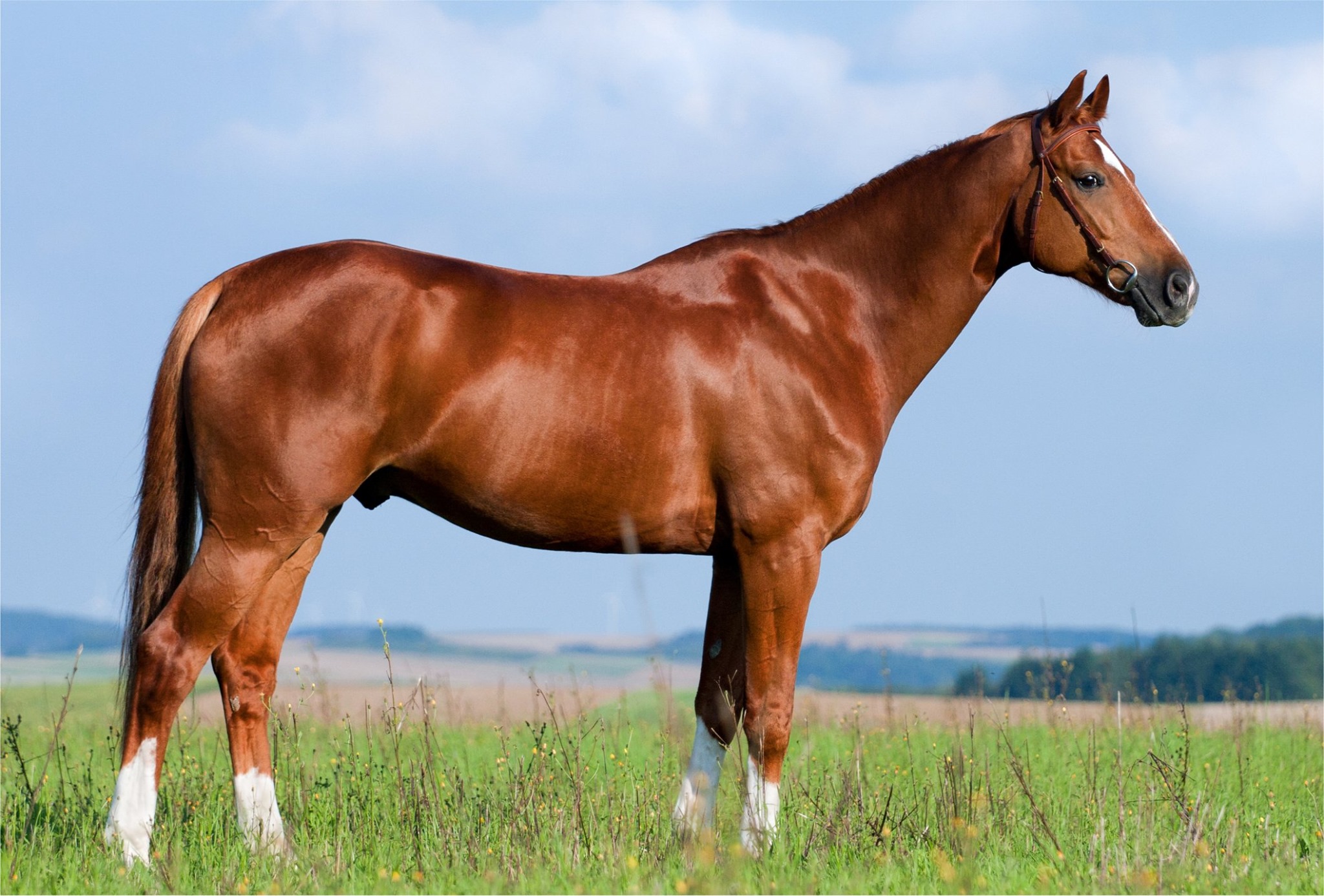
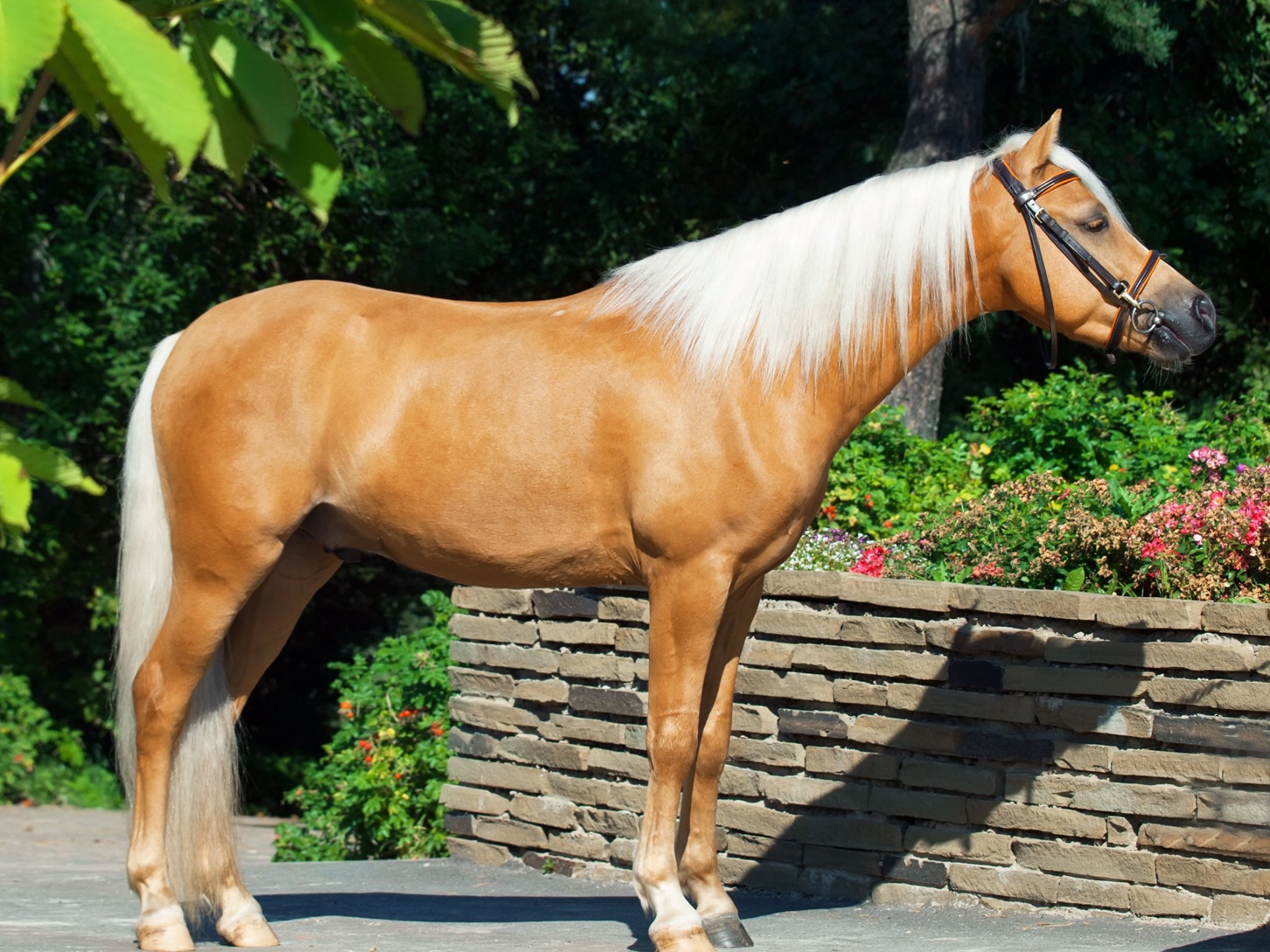
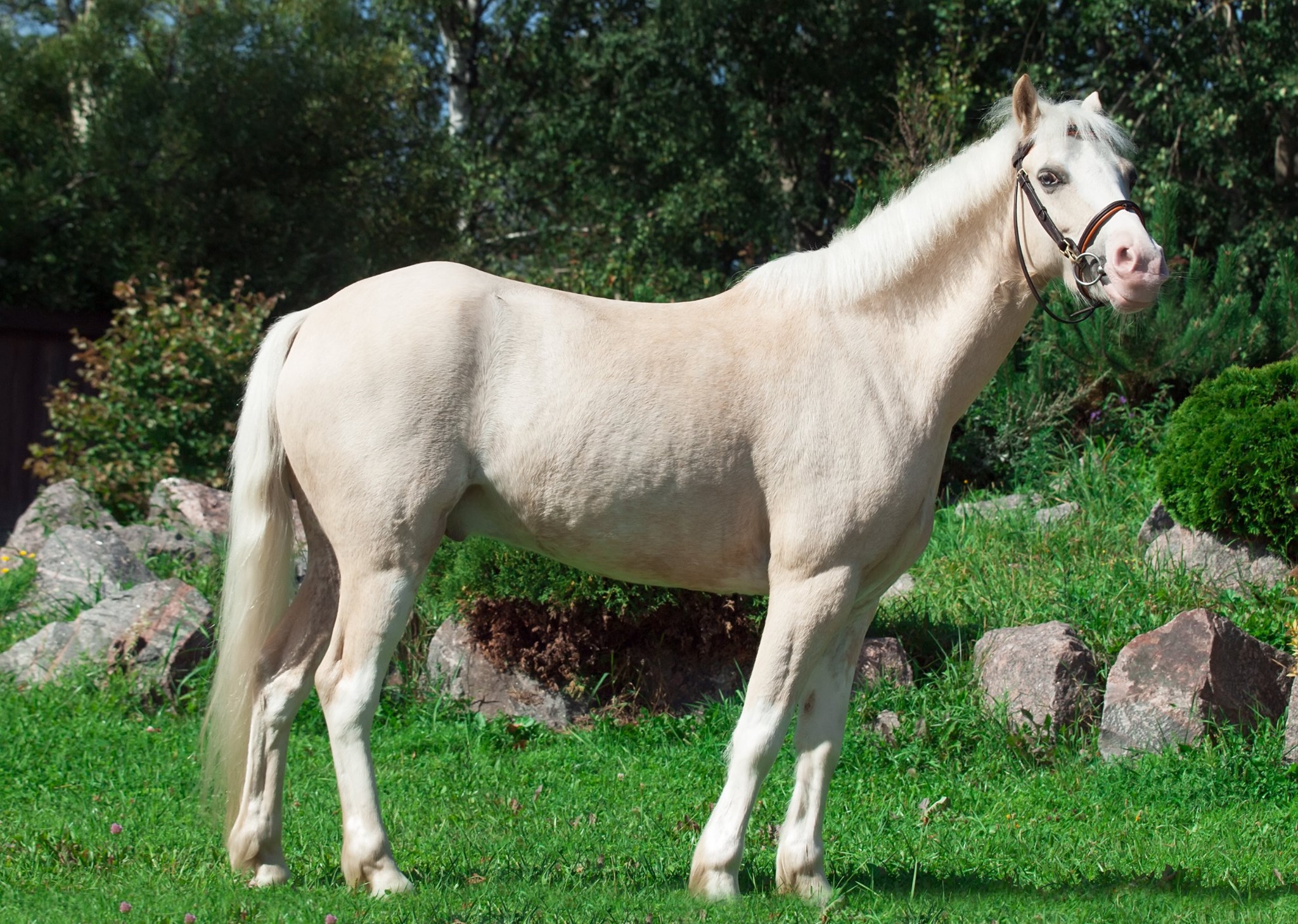
May 20, 2019 - VGL Vocab: Mitochondrial DNA (mtDNA)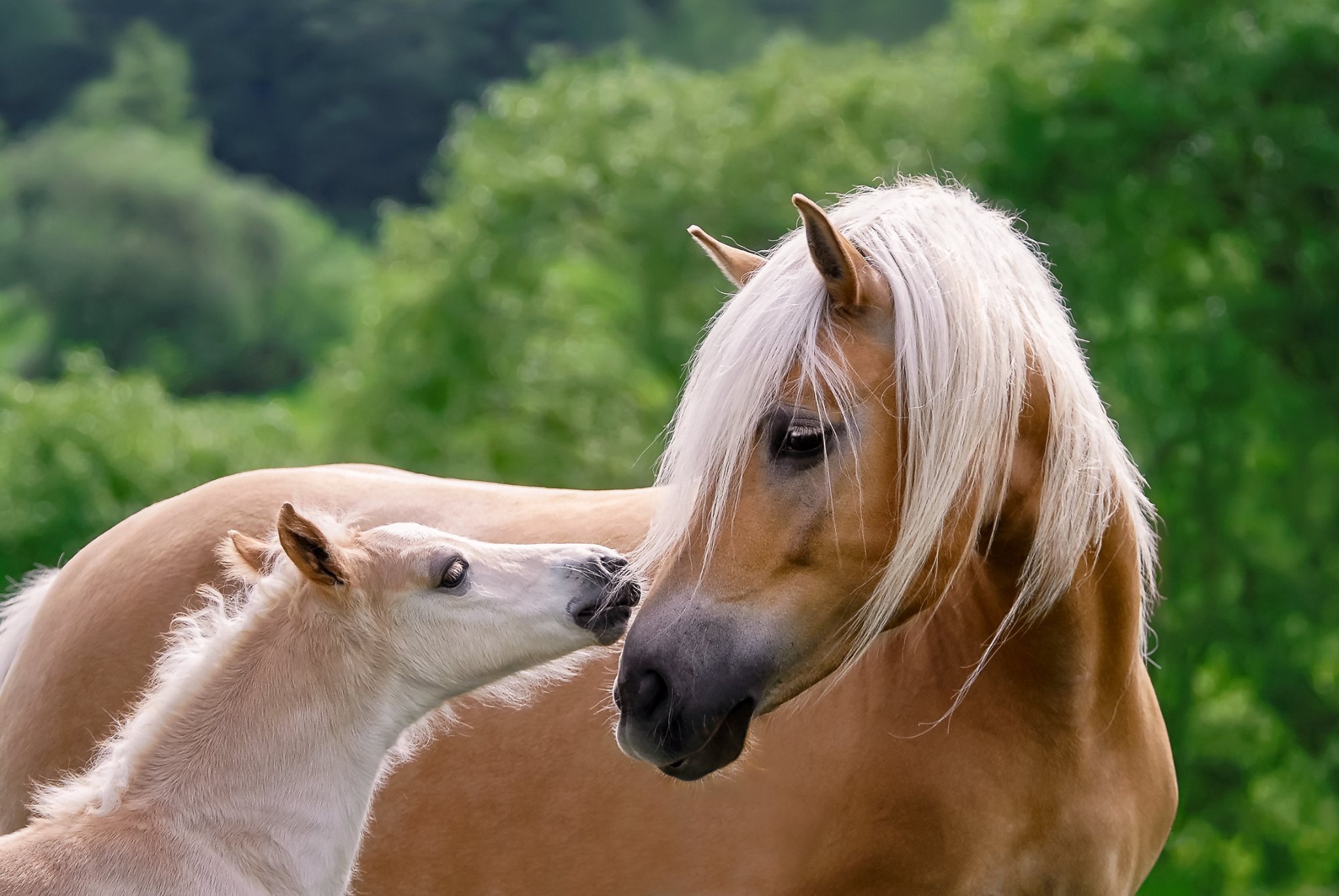
Did you know that not all DNA is located in the nucleus of a cell? The mitochondria, which produce the energy for the cell, have their own DNA (known as mtDNA). Because mtDNA is primarily inherited from the mother’s egg, it provides a unique opportunity to trace the maternal lineage, sometimes for hundreds of generations!
mtDNA can also be used for identification. Our Forensics Unit examines mtDNA for use in criminal proceedings and for species identification in our Meat ID test.
For more information about our Forensic testing, see:
https://www.vgl.ucdavis.edu/forensics/index.php
For MeatID info, see: https://www.vgl.ucdavis.edu/services/meatid/
December 17, 2018 - VGL Vocab: Allele
Alleles are best defined as alternative forms of a gene or genetic marker. They are caused by differences in the sequence of the DNA at a specific position.
We showed you examples of alleles in our latest #PuppyTale posts. For each marker in question, the puppy inherited one allele from their mother and one from their father, resulting in either a homozygous (same alleles) or heterozygous (different alleles) genotype at that chromosomal location.
Keep following us to learn more #VGLVocab words and follow a #PuppyTale to learn more about genetic inheritance and phenotypic traits!
September 27, 2018 - VGL Vocab: Dominant and Recessive traits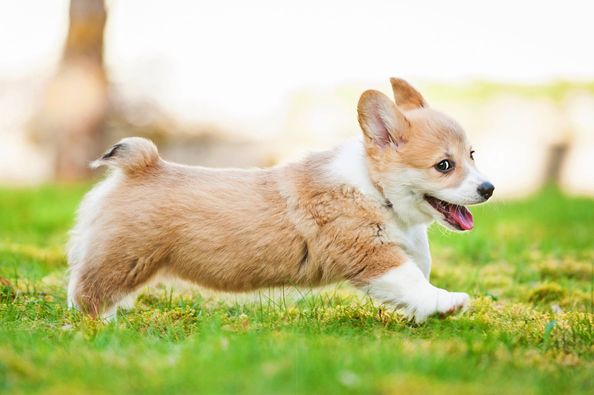
#VGLVocab In the last Vocab post we discussed mutations (gene variants). Inheriting one copy of a mutation from a sire or dam does not necessarily mean that the animal will express the trait/disease. This will depend on the mode of inheritance and penetrance. We will discuss penetrance later, but for now let's talk about two modes of inheritance: dominant and recessive.
Dominant: Animals with one or two copies of the variant will express the trait. Natural bobtail in dogs is an example of a dominant trait. Dogs with one copy of this mutation/variant will have a shortened tail. The length can vary from almost normal to virtually no tail.
Recessive: These traits need two copies of the variant in order to be expressed; animals with one copy are referred to as carriers. Canine Multifocal Retinopathy 1 (CMR1) is one example of a recessive trait. This is an ocular condition in which dogs with two copies of the causal variant usually present with areas of retinal detachment between 11 and 16 weeks of age. Breeding two carriers will give you a 25% chance of producing an affected dog.
Both of the examples we mentioned occur in many breeds of dogs. For more information about these and other tests, see https://www.vgl.ucdavis.edu/services/index.php
September 7, 2018 - VGL Vocab: Mutations (aka genetic variations)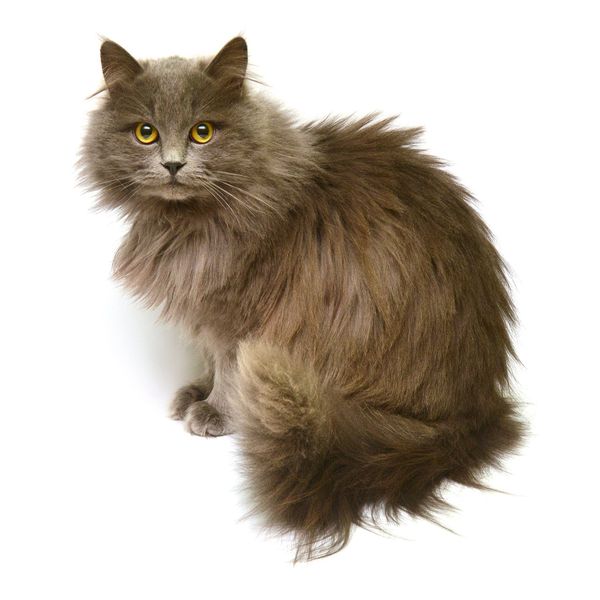
Changes in the DNA sequence, also known as mutations, can arise from DNA damage or errors during replication, the process where the DNA is copied to make more cells. When this happens during gamete formation (production of egg and sperm) these changes can get passed down to the next generation. Sounds bad, right? Actually, not all change is bad, mutations sometimes are neutral and do not change gene function and sometimes they even code for desirable traits. Long hair in cats, for example, arose from several different mutations in a single gene!
Some common types of genetic variations:
Insertion/Deletion - one or more nucleotides are either added to or deleted from the gene sequence. Some insertion or deletion traits that the VGL tests for include black coat color in horses, agouti coat color in cats, dwarfism in cattle, and improper coat (furnishings) in dogs.
Single Nucleotide Polymorphism - or SNP for short (pronounced "snip") describes when a single nucleotide (A,C,G, or T) has been substituted; for example a 'C' is replaced with a 'T'. The VGL tests for a variety of different traits caused by SNPs some examples include HERDA in horses, Persian PRA in cats, dun coat color in cattle, and Hyperuricosuria in dogs.
For more information about our tests, see https://www.vgl.ucdavis.edu/services/index.php
August 29, 2018 - VGL Vocab: Nucleotides and Sequences
Nucleotides are the building blocks of DNA. There are four nucleotides: Adenine(A), Guanine(G), Cytosine(C), and Thymine(T). In double-stranded DNA, 'A' bonds with 'T' and 'G' bonds with 'C', these are known as base pairs. It is the precise order of the nucleotides of each gene that determines it's function and ultimately determines everything about an animal!
When DNA is sequenced, the process reveals the pattern of nucleotides in a section of the DNA such as: ACCGTAGTT. This sequence can be compared between animals to investigate the cause of a trait or disease. Much the same as changing one letter in a sentence can change it's meaning, changing one or more nucleotides in a gene can change the function. A pig, for example, has about 3 billion bases of DNA, and a single change in just one of these bases can have dramatic effects on phenotype!
August 16, 2018 - VGL Vocab: Genes
A gene is a unit or specific sequence of DNA that contains the instructions for a trait. Dogs have over 20,000 different genes. The physical trait of an animal (known as the phenotype) is determined by the genotype, or precise sequence of a gene. In some cases the phenotype is determined by the genotypes of multiple genes.
In the photo below, the black color of this Labrador Retriever is the phenotype. The genotype of this dog for the TYRP1 and MC1R genes will reveal whether or not she carries the information to produce black, yellow or chocolate colored puppies when bred to an appropriate male.
To find out more about these genes, visit http://www.vgl.ucdavis.edu/services/dog/mc1r.php http://www.vgl.ucdavis.edu/services/dog/brown.php
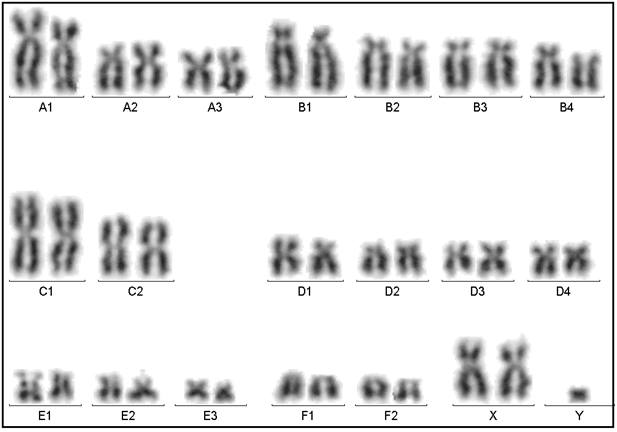
July 24, 2018 - VGL Vocab: Chromosomes part 2
In a previous post we talked about chromosomes and how numbers differ between species. There are a few more important concepts we’d like to share with you, including sex chromosomes, autosomes, and chromosomal abnormalities.
In mammals one pair of chromosomes determine sex, either XX (female) or XY (male). The rest of the chromosomes are called autosomes. However, sometimes an animal is born with an abnormal number of chromosomes, and this phenomenon is known as aneuploidy.
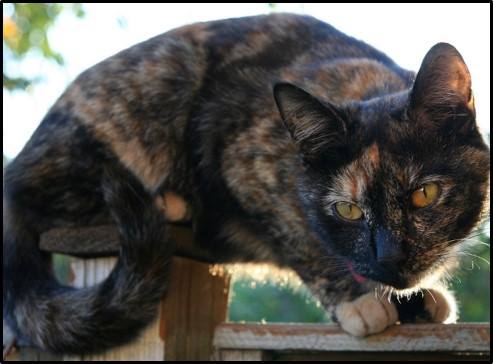
The karyotype below shows an abnormal number of chromosomes in a male cat. There are two 'X' chromosomes and one 'Y' chromosome which causes a disorder called Klinefelter's syndrome. It is also the reason the male cat (shown below) displays a tortoiseshell coat pattern, a pattern usually only seen in females! Photo credit: Drs. Terje Raudsepp and Felipe Avila
Stay tuned for more 'VGL Vocab' in the future and visit our website at https://www.vgl.ucdavis.edu.
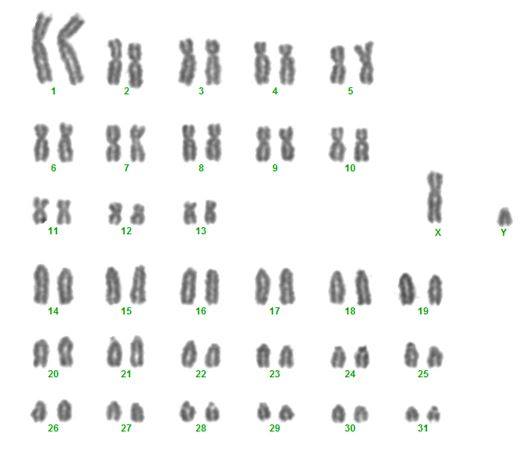
June 29, 2018 - VGL Vocab: Chromosomes part 1
Chromosomes are the gene-carrying structures that are composed of DNA and protein. Chromosomes are passed down from one generation to the next and are inherited in pairs; one from the mother and one from the father. Different species have various numbers of chromosomes. Humans have 23 pairs or 46 total, horses have 64 total, dogs have 78, and pigs have 38. Chromosomes can be seen under a microscope during certain stages of cell division! Here is an image of horse chromosomes (photo credit: Dr. Teri Lear).
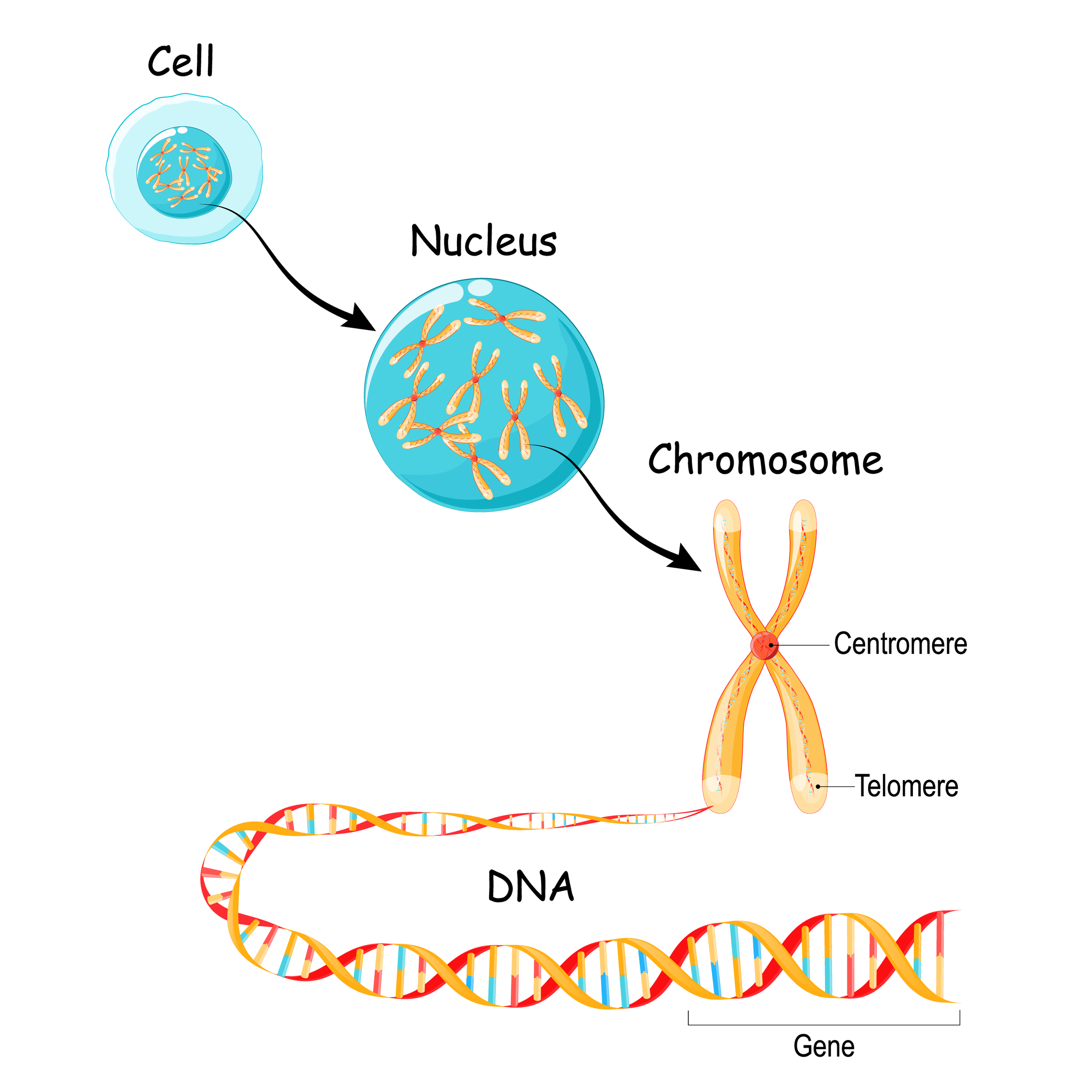
June 13, 2018 - VGL Vocab: DNA
What is DNA? When you send us hair, swab, or blood samples from your animal we extract DNA to perform genetic tests that give you answers regarding color, parentage, and health traits. But what is DNA exactly?
DNA stands for Deoxyribonucleic Acid. It is a molecule that contains the genetic code, or instructions for life. These instructions allow for reproduction, growth, development, and everyday function. DNA is found inside of cells and is the material that is passed down from parents to their offspring.
Small changes or variations in the genetic code from one individual to the next can dictate the difference between a brown or dilute dog, or whether an animal is affected or not affected by a hereditary disease. We test for specific variations in the genetic code of DNA to give you information about your animal.

